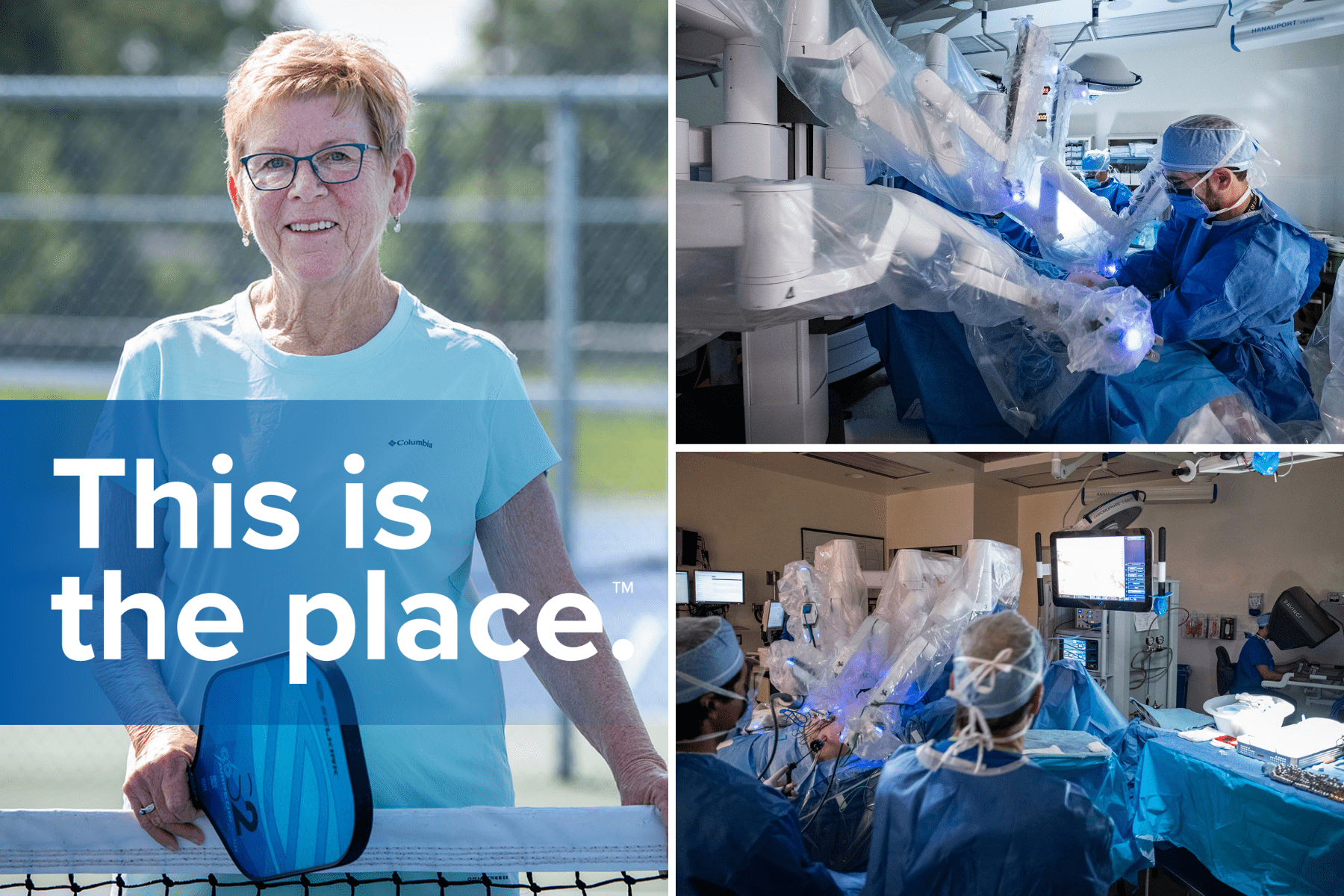Effective immediately masking is required for everyone when present on all inpatient units, in the Emergency Department (ED), the Urgent Care Centre (UCC), and the Children’s Outpatient Centre (COPC).

While Cathy Rows’ desire to have fun and stay active fuels her pickleball game, she says the rallying of her family, friends and Kingston Health Sciences Centre (KHSC) care teams powered her ability to bounce back from colon and lung cancer in just 16 short weeks.
Equipped with a robotic operating system called da Vinci, Cathy’s surgical teams were able to perform both her surgeries with robotic assistance, which meant her recovery times were quick. At best, she was home in a few days and on the pickleball courts 10 days later.
It’s possible to recover faster because – unlike traditional surgery where patients experience long, deep incisions – robotic systems allow surgeons to use micro-instruments that provide greater precision, resulting in much smaller incisions and less bodily trauma including blood loss.
“My, how things have changed since I did general surgery as a registered practical nurse,” says Cathy, who is 70 and has two children and six grandkids. “Back then, my recovery from two traditional surgeries would have taken double the time at least.”
Her pickleball teammates, including her husband John Rows, were amazed at how quickly she recovered saying, “She was back sooner than anyone expected.”
“Technology is a wonderful thing,” she adds, “without it and the support of the people around me, my journey would have looked a lot different.”
“I’m a very fortunate woman.”
Before her cancer diagnoses, Cathy felt great. She had no symptoms.
It was an abnormal at-home screening test called the fecal immunochemical test (FIT) – something she had done every two years for over a decade – that set her care plan in motion.
An abnormal FIT doesn’t necessarily mean you have colorectal cancer, but in Cathy’s case, additional testing revealed she did.
Cathy describes the ensuing appointments and tests as “a whirlwind,” but in a good way. “My cancer was caught early and I received timely, expert care. I’m a very fortunate woman.”
During the CT scan that was part of the preparation for her colon surgery, a nodule was found on her right lung. A later biopsy confirmed cancer and that lung surgery was also going to be necessary.
Cathy had never heard of robotic-assisted surgery before meeting with her surgeon Dr. Sunil Patel. That’s when she learned it would be the technique used during her surgery. As a national leader in robotic colorectal surgery, KHSC is able to offer this method in over 90 per cent of colorectal cancer cases.
Even with this new awareness, she didn’t think much about what it would be like for her surgeon to be assisted by robotic arms and 3D cameras. She just wanted the cancer removed and trusted Dr. Patel and the team to do what was needed.
Her attention was quickly captured, however, after she experienced the fast recovery process and then was told her next surgery for lung cancer with thoracic surgeon Dr. Andrew Giles might not be robotic-assisted.
“Even though KHSC is the only hospital in the country using the robot regularly for lung and colorectal surgeries and where it’s more likely patients can receive robotic surgery for both, scheduling one system is a challenge,” says Dr. Patel.
Robotics in demand
“I was excited when my lung surgery got scheduled on the one day a week Dr. Giles has access to the robot,” says Cathy.
With one robotic system in the A.B. Smith QC Robotics program for all of southeastern Ontario, Kingston Health Sciences Centre (KHSC) is at capacity offering 200 to 300 robotic-assisted surgeries each year across multiple specialties: gynecology, urology, general surgery, thoracic and colorectal.
“Adding another robotic system would let us offer this advanced care to more patients in our region, and expand our use of robotics in different surgeries," says Jason Hann, executive vice president of Patient Care at KHSC. "It's a big investment, but it's worth it for the improvements in patient recovery, positioning KHSC as a leader in advanced robotic surgeries."
Each year, using the robotic system saves KHSC nearly $400K in decreased (often by more than half) Intensive Care Unit admissions, 90-day hospital readmission rates, emergency department return visits, and length of time people need to stay in the hospital after surgery.
“I would like to see KHSC get another robot so people don’t have to hope their surgeons have access to this incredible technology that made such a difference in my life,” says Cathy.



